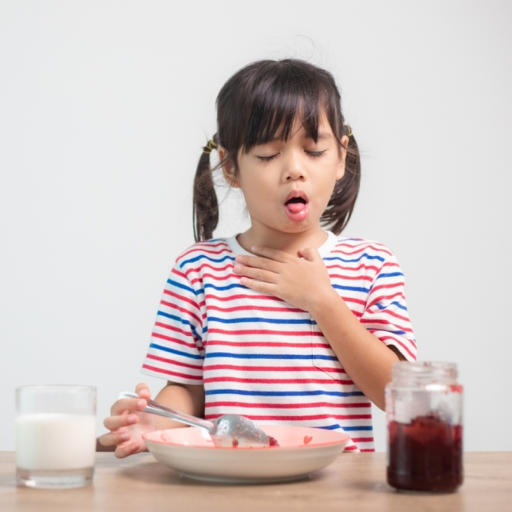
The food associated with choking poses a health risk, especially for children and old people. The title of this post addresses the three worst choking foods, and also how to avoid them. This article breaks down the ten most notorious choking foods: grapes, nuts, and hot dogs as well as advocates for their correct Preparation. As long as the risks are well understood and measures taken, tummy time should be a comfortable experience for everyone involved. Now, let's get ready and adventure into the perilous list of foods that increase choking risk and look out for some of the preventative measures that can be useful.
What are the Top 10 Choking Foods for Adults?
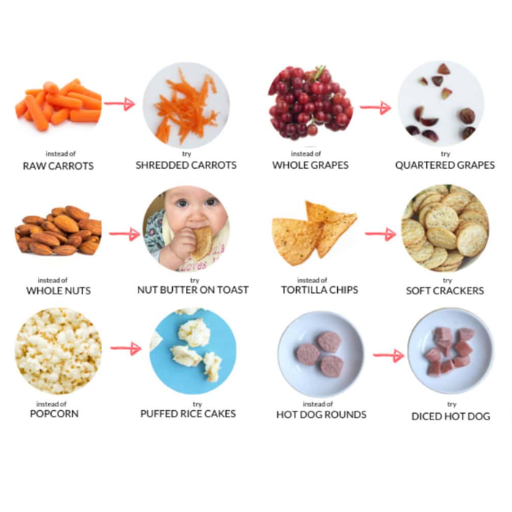
Choking hazards are not just a concern for children; adults too can fall victim to them. The following foods have been identified as common choking hazards for adults:
- Meat - Especially tough or large pieces like steak or roast beef.
- Bread - Dense or crusty pieces not thoroughly chewed can cause trouble.
- Fruit with Pits - Cherries, olives, or any fruit with seeds or pits.
- Nuts - Whole or even chopped nuts can easily become lodged in the throat.
- Cheese - Particularly stringy or sticky varieties like mozzarella or cheddar.
- Grapes - Whole grapes, especially if not cut into smaller pieces.
- Carrots - Hard, raw carrots are a common culprit, especially if not sliced thinly.
- Popcorn - Unpopped kernels or husks can present a significant hazard.
- Chicken with Bones - It's easy to accidentally swallow small bones.
- Rice - While small, rice can clump together and cause choking if not fully chewed.
To minimize these risks, make sure to chew food thoroughly, cut it into smaller pieces, and avoid talking or laughing while eating.
Understanding Common Choking Hazards
Almost always ignored, chomping risks are lethal injuries waiting to happen. To appreciate these risks, there is a need to appreciate the possible choking hazards of foods and behavior. Severity sources highlight the most reported foodstuffs leading to adult choking such as meat, bread, and pit-bearing fruits.
For meat, it is the largest of the poorly chewed portions of meat that seem to cause the obstruction. Massive dense bread or hard pieces are also a hazard when they are not chewed enough and are swallowed in great quantities. Fruits such as cherries and olives contain pits which when eaten carelessly or in large amounts can choke a person. Attention should be directed to possible measures among many that include thoroughly chewing the food, refraining from talking when eating and sustaining reasonable and stoppable sizes of food. In addition, education regarding these hazards can lessen the risk significantly, making adult eating habits safer.
Why Hard Candies Are a Choking Risk
The greatest risk from hard candy is choking which is mostly brought about by their size and texture which do not make them easy to chew. Chewing candy does not come easily; it is a far more difficult task than taking a bite out of a soft food and hard candy takes time to be able to suck it in or much force to bite into which makes the possibility of swallowing it whole quite high. Their shape contributes to this: being round makes them easy to slide into the throat where they could potentially block the airway. From personal encounters and consistent research from resources such as websites, it’s apparent that children who are more tender and older people are at a greater risk than most. To make sure that I do not experience cracking of the teeth and worsening of my jaws further from the candy, I make sure that I sweet treat myself by sucking hard candy.
How Foods Like Hot Dogs Can Get Stuck in the Throat
Pure Foods presents an odd and potentially dangerous hazard to children and seniors alike, calling to mind the pearl jam children sing along with, possibly lacking the maturity to recognize the repercussions of gluttony. These young ones sometimes fail to appreciate the perils of food consumption and devour hot dogs without cautious chewing. The structure and shape of hot dogs encourage ingestion, which is particularly mistaken to occur in a rush or during entertaining moments, often without proper mastication. This worst-case scenario is made more likely by the standard size and geometry of hot dogs, comprising an 18-25 mm in diameter awkward cylinder of an easily deformable substance that duck-tapes itself to the throat. The recommendation sounds simple: cut the sausage up into thin pieces and promote chewing-greater awareness and societal etiquette regarding such matters will never hurt. Assuming excessive glory is associated with chomping off direct copious amounts of food, a healthy approach taken a step further will not hamper progress so you would think.
How Can You Prevent Choking Hazards for Babies?
 To protect babies from choking, common sense and a little prevention go a long way. First, a close watch on the baby’s feeding effort is an obvious solution as children tend to take more than what they can chew. Parents should select food items that are suitable for the child’s age and cut them into finer pieces that are easy to eat. It is also advisable not to give babies round, hard or sticky food items such as whole grapes, nuts, or gummy peanut butter as these may block their airways. It can be recommended to feed them while they sit to make sure they swallow correctly and encourage them to cut food with their teeth when the babies develop teeth. The approach of encouraging appropriate eating behaviors and making the environment safe can substantially reduce the chances of babies choking.
To protect babies from choking, common sense and a little prevention go a long way. First, a close watch on the baby’s feeding effort is an obvious solution as children tend to take more than what they can chew. Parents should select food items that are suitable for the child’s age and cut them into finer pieces that are easy to eat. It is also advisable not to give babies round, hard or sticky food items such as whole grapes, nuts, or gummy peanut butter as these may block their airways. It can be recommended to feed them while they sit to make sure they swallow correctly and encourage them to cut food with their teeth when the babies develop teeth. The approach of encouraging appropriate eating behaviors and making the environment safe can substantially reduce the chances of babies choking.
The Importance of Small Bites and Chewing
Undeniably, every individual must take small bites and chew food properly, as it greatly reduces the chances of choking and promotes better digestion. The fact that proper parameters are followed while consuming anything leaves very minute pieces of food that can get lodged into the throat. When food is chewed correctly, salivary glands are encouraged to produce saliva containing amylase, which breaks down carbohydrates as they travel through the digestive system In one of the standard health-related websites, chomping on food mindfully provides additional advantages: it also increases the safety of eating and promotes better nutrient uptake, because small bites taken and mouthfuls of food are chewed for long. In doing so, the people do not run the risk of swallowing their meals whole, which is particularly useful for young children and the elderly who have a higher incidence of choking.
Foods to Avoid Feeding Babies and Toddlers
Every parent's primary concern is to make sure that the child doesn't get into any trouble, stay well within the rim, and ensure that his safety is never a question mark. There are numerous distinct types of foods which should be avoided. According to the sources I consulted, Evacuation of those foods that have plump insufflated round-shaped substances such as grapes and nuts or a spherical type food consisting of flesh-like meat that can occlude an infant's airway is advisable. In as far as there are some provisions, processed sliced meat has been termed convenient but is severely insufficiently chewed by small, vulnerable ones resulting in potentially fatal consequences. Other items are hazardous, like shellfish, which may cause allergy, and honey, which can cause botulism. Other sticky foods, such as marshmallows and peanut butter are also highly dangerous as they can be readily sealed within a child's larynx. Nevertheless, by acknowledging these threats and deliberately avoiding certain items, I can enhance the safety of my child.
Understanding Choking Risks Associated with Common Foods
Choking on common foods often occurs when foods are small, round, hard, or sticky, as these characteristics can block the airway. To mitigate risks, it's important to be aware of the specific traits that contribute to choking hazards:
- Size and Shape: Foods like whole grapes and nuts have a round shape that can easily lodge in a child’s throat. It's advisable to cut foods into smaller, uneven pieces.
- Texture: Hard candies and raw vegetables such as carrots can be difficult for young children to chew correctly. Offering soft-cooked versions may reduce risk.
- Stickness: Sticky foods like marshmallows and peanut butter can adhere to the throat, increasing the risk of choking. It's best to serve them in thin, manageable layers.
- Consistency: Foods that change consistency, like popcorn, can create unexpected choking hazards if inhaled unintentionally.
By recognizing these characteristics, caregivers can better evaluate the safety of foods offered to children and adjust them accordingly to prevent choking incidents.
What to Do if Someone is Choking?

When someone is choking, immediate action is crucial to clear their airway. Here are the steps you should take:
- Identify the Situation: Ask if the person can cough or speak. If they are unable to, they might need help.
- Call for Help: If the person cannot breathe, call emergency services immediately.
- Administer Back Blows: Stand behind the person and give up to five firm blows between the shoulder blades with the heel of your hand.
- Perform Abdominal Thrusts: Place your arms around the person’s waist. Make a fist with one hand and place it slightly above the navel, then grasp your fist with your other hand and perform quick, upward thrusts.
- Repeat Steps: Alternate between five back blows and five abdominal thrusts until the object is expelled or emergency help arrives. If the person becomes unconscious, begin CPR if trained.
Always ensure your safety and the safety of the individual during these procedures. If trained, follow the guidelines provided by accredited organizations like the Red Cross or the American Heart Association.
Recognizing the Signs of Choking
Choking is a life-threatening medical emergency. But a rapid response can alleviate its effects which begins with understanding how to provide help. Continued wheezing, coughing, or inability to breathe indicate that the victim is choking. Patients experiencing choking have been observed to apply pressure around their neck – the universal sign of choking, accompanied by panic. Their airway is only moderately obstructed, allowing them to produce some sounds and cough, but not speak, to indicate that they are still oxygenating. In total obstruction, a patient might be unable to speak or cough or produce any sounds, with bluish lips and skin as a result of oxygen deficiency. These indicators are within the capabilities of untrained people and can help them respond appropriately. Choking allows the perpetrator to seek help quickly as they realize the danger and know how to solve it.
Performing the Heimlich Maneuver
I'm here to help you understand how to perform the Heimlich maneuver effectively. Based on my understanding from reliable sources, including top health information websites, the Heimlich maneuver is a procedure used to forcefully expel an object from the airway of someone who is choking. Here's how I would explain the process:
- Stay Calm and Safe: First, I need to ensure my safety and the safety of the person choking. I'll assess the situation quickly and use my best judgment to decide if I need to get help.
- Assess the Situation: If the person can't cough, speak, or breathe, they're choking, and I need to take action immediately. In such circumstances, I'd assure them to stay calm and signal that help is coming.
- Perform the Heimlich Maneuver: Standing behind the person, I’ll wrap my arms around their waist. I’ll place my fist above the navel and cover it with my other hand. Using quick, upward thrusts, I aim to create enough pressure to dislodge the object.
- Repeat if Necessary: I'll repeat the thrusts until the object is expelled or the person starts to breathe normally. Throughout this action, I remain vigilant about any changes in their condition.
- Call for Professional Help: If the situation doesn't improve quickly or the person loses consciousness, I must call emergency services immediately. If possible, I'll start CPR and continue until help arrives or the person revives.
While performing the Heimlich maneuver, I need to remain calm and composed, focusing on providing prompt and efficient aid and following the techniques recommended by health experts. My main goal is to relieve the obstruction and ensure the person begins to breathe on their own.
When to Seek Emergency Help
When the Heimlich maneuver is ineffective and the person has lost conscience or does not respond, emergency services must be called as a matter of priority. Indications for emergency assistance include the inability to breathe, speak, or cough, cyanosis of the face or lips, and progressive distress despite efforts. Professional assistance is expected at this point and if the person goes unconscious, CPR is commenced and it is maintained until emergency professionals take over. In such situations, subsequent instructions by a dispatcher, for instance, the Hylander’s current condition, must be adhered to to provide the quickest possible help to the Hylander.
Why Are Some Foods More Likely to Get Stuck in the Throat?
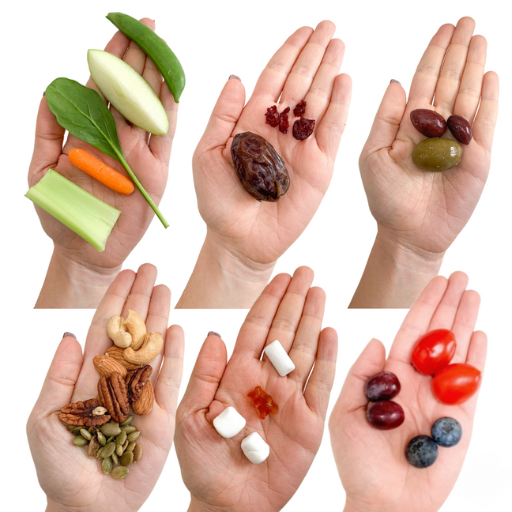
Certain foods are relatively easy to get lodged in the throat or even the esophagus because of their size, shape, or nature. Examples would include tough meats including steak and chicken or any kind of fibrous meat that requires thorough chewing. Other foodstuffs include dry crumbly food such as bread and crackers which when mixed with saliva clumps may lead to choking. Throat-lining foods such as peanut butter, candy, and other dense foods can also stick and cause choking. Improper mouth behavior in terms of the size of bites or degree of chewing may increase the mentioned risks and therefore extreme caution is necessary in using those particular foods, especially in children and the aging population.
The Role of Food Texture and Size
Choking risk is fundamentally determined by food texture and size. Here, simpler, round-edged pieces of food like grapes and cherry tomatoes which are soft and smooth in consistency can get lodged into the throat causing a choke. Hard, raw vegetables and chunks of tough meat can also pose a risk, but the complications arising here are due to the consumption of larger chunks which are harder to crush. It is best to advise that food consumed is minced properly and chewed adequately to ensure that the risk of choking is minimized. Also, it is quite important to control the amount of food, especially for children. They are easier to choke because they cannot swallow larger pieces of food. It is logical to suggest that when swallowing such properly prepared and lubricated foods, passage through the throat is much easier, thus emphasizing how food is prepared and consumed is internalized to ensure safety.
How Raw Vegetables and Carrots Present a Choking Hazard
Dealing with raw vegetables and also carrots has taught me that their shape and firmness increase the chances of choking more especially if they are not prepared well. On such sites I looked at, it is pointed out that large pieces of raw vegetables can fill the throat and therefore should not be given to children or old people who cannot chew well. Such carrots, however, are thick and hard in structure and, therefore, should be sliced into thin strips or small pieces to minimize risk. It is obvious from the materials that such high-risk situations can be brought about and even a clinical perspective reduces the morbidity associated with choking by careful consideration of food presentation, In this case, grating or cooking even the hardest stiff vegetables would help. Besides, it was also necessary to observe the participants at the meal to make sure each of them chewed very well before they swallowed the food.
The Leading Cause of Choking Hazards in Adults
As in the case of other risks of choking, some factors among adults have proven to be associated with it. The key reason among them appears to be the consumption of dry or insufficiently chewed food (nuts, popcorn, crusts, etc) which may get stuck in the trachea. This is also a matter of other technical parameters related to this particular problem: the size and texture of the food particles. Such food that exceeds a certain diameter or is too hard is likely to present a choking risk. In addition, people with dysphagia or some swallowing disorders are at an even greater risk and therefore require some medical intervention aimed at dietary control. A preventive note should be made about strategies designed to curb excessive intake of food by trying to establish in individuals the appropriate size of a mouthful and thorough chewing of food.
What Are the Choking Risks of Eating Quickly?

The possibility of choking is greatly hurriedly heightened by the consumption of food, as this usually causes the food to be swallowed without adequate chewing and large chunks of the food can then enter the windpipe. When a person is in a hurry to eat, he or she may talk or laugh – both of which are known to interfere with the swallowing action and increase the chances of food aspiration rather than oral ingestion. Furthermore, aggressive eating eliminates these biological controllers of choking, which include salivary secretion as well as the swallowing mechanism, both working in a ‘synchronized’ manner. To avoid such scenarios, it is recommended to eat meals at a more leisurely pace, take small bites, and thoroughly chew well before swallowing the food.
How Big Bites Can Cause Choking
Biting off more than one can chew, or taking a big chunk of food into the mouth at once can pose a potential choking risk as it will be hard to try and process such large slices efficiently and safely. It is also true that bigger bites make it harder and even time-consuming to chew food. With such types of eating, it is comprehended that chunks of food that are too large will be swallowed drifting midway down the esophagus instead of going down smoothly. There are body stoppers such as grit, and mastication and swallowing should naturally engage at the extreme of each end. Furthermore, when bite sizes are too large it could lead to further risk. Owing to large bites or sips the center of control which governs the direction in which the food goes inside gets stressed and increases the chances of blockage. Hence, taking smaller, more manageable pieces when eating has very potential and decreases choking risk greatly.
The Dangers of Not Chewing Properly
I’ve come to realize that failing to chew my food adequately increases my chance of choking and stomach problems. This is because proper chewing enables the food content to be processed into smaller particles, which, in other components, facilitates easier digestion and absorption of nutrients. Several top sources point out many Norwegians share common eating habits of chewing their food too little, which also leads to gastric consequences since larger pieces of food are more difficult for the stomach to break down and cause bloating or discomfort. Also, by not chewing properly enough, I tend not to recognize certain signals from my body like satiety which may result in me overeating. As such, however, to avoid these problems, I have to take the initiative to chew my food thoroughly and savor every bite by examining the taste and feel of the food.
Why Eating in a Rush Could Lead to Choking
Eating in a hurry tends to increase the chances of choking for several principal reasons. It is quite common for people to take larger and untasted bites during rapid eating and such a practice starts the digestive process on a very bad note. One expert suggests that one should chew every mouthful twelve to fifteen times before swallowing it, but this is common when fast feeding. Second, there are greater chances of swallowing air with food while fast eating which increases the discomfort and risk of blockages. The process of eating which involves swallowing food and taking a breath is considerably disrupted when one is in a hurry which can also result in food getting misplaced in the wrong tube. Patients need to be inculcated with a habit of giving enough time for each meal, taking a slower approach to bite sizes, and aiming at areas deeper in the mouth while chewing a lot which will prevent choking.
References
Choking Trachea FoodFrequently Asked Questions (FAQ)
Q: What are the top 10 food-choking hazards for babies and toddlers?
A: The top 10 food choking hazards for babies and toddlers include hard candies, whole grapes, nuts, popcorn, raw vegetables, chunks of meat or cheese, hot dogs, seeds, sticky foods like peanut butter, and marshmallows. These foods can easily become a choking hazard if not prepared properly.Q: Why are certain foods considered choking hazards for babies and toddlers?
A: Certain foods are considered choking hazards because they can easily block a child's airway, leading to gagging or more severe choking. Foods that are small, round, or sticky are particularly dangerous because they can become lodged in the throat.Q: How can I safely prepare solid foods to prevent choking?
A: To prevent choking, make sure to cut solid foods into small pieces and lengthwise, especially for young children. Avoid giving foods that are hard to chew and always supervise mealtime to ensure safety. The American Academy of Pediatrics provides guidelines on how to safely prepare foods for little ones.Q: What should I do if a child is choking on a food item?
A: If a child is choking, immediately call 911 and perform first aid to clear the blockage. Have the child lean forward and perform abdominal thrusts until help arrives. Be sure to check with your pediatrician or attend a first aid course for more detailed instructions.Q: How can I prevent choking hazards during mealtime?
A: To prevent choking during mealtime, always supervise children, especially when they are eating in a high chair. Encourage them to take small bites and chew thoroughly. Avoid giving foods that are known choking hazards and cut food into safe sizes.Q: Are there specific guidelines for foods that are fine for babies?
A: The American Academy of Pediatrics and pediatricians recommend starting with pureed or soft foods for babies and gradually introducing solid foods as they grow. Always ensure that the food is appropriate for their age and development stage.Q: What is the role of the National Safety Council regarding choking hazards?
A: The National Safety Council provides resources and education on preventing choking hazards, including lists of dangerous foods and safe eating practices. They aim to reduce choking incidents, which are a leading cause of death in American homes.Q: Why is choking on food a third leading cause of death in American homes?
A: Choking on food is the third leading cause of death in American homes because it can happen quickly and without warning. Many choking incidents are preventable with proper food preparation and supervision during meals.Q: How can I teach my child to avoid taking a big bite?
A: Teach your child to take small bites by modeling the behavior during meals. Explain the importance of chewing food thoroughly and encourage them to eat slowly. Consistent practice and supervision will help reinforce these habits.


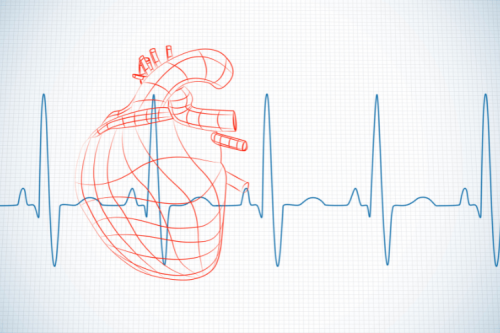
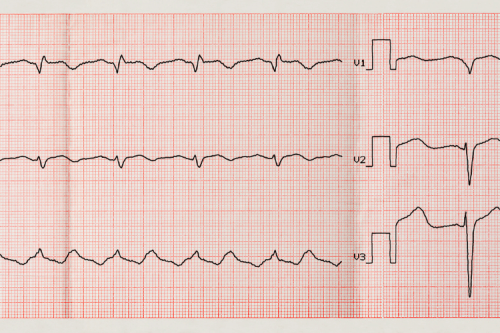
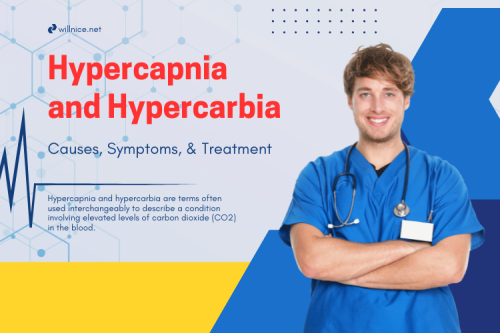
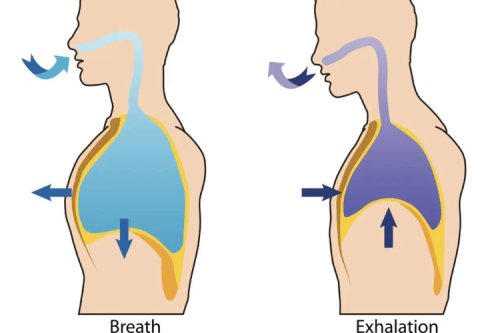
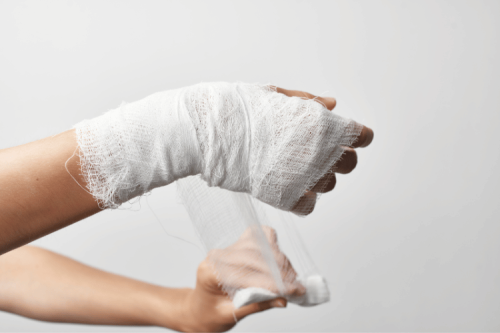
 Login with Google
Login with Google Login with Facebook
Login with Facebook